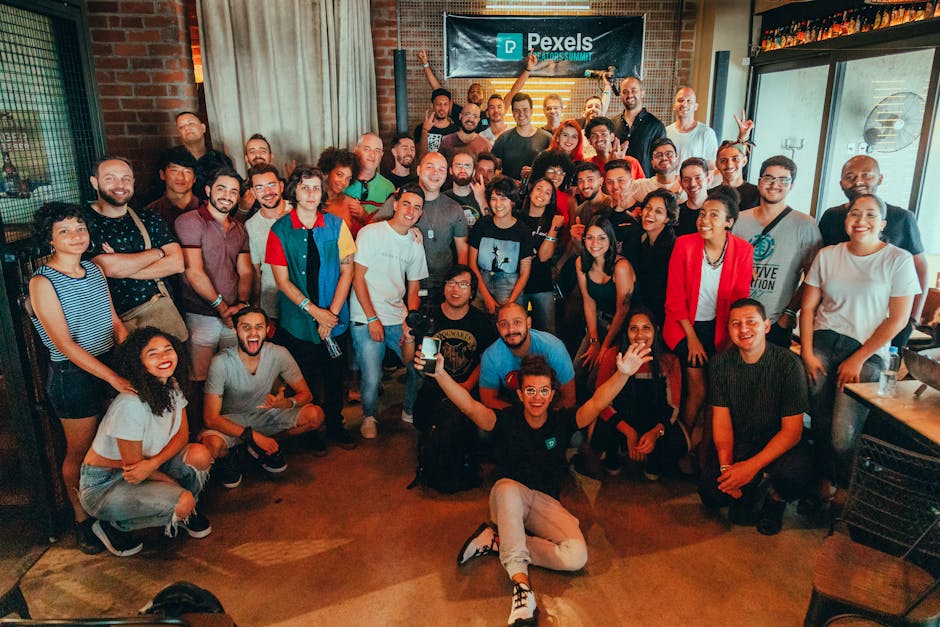- Introduction to Creator Monetization
- The Creator Economy Market Landscape
- Core Monetization Strategies and Models
- Key Terms and Definitions in Creator Monetization
- Emerging Trends and the Role of AI
- Practical Applications and Case Studies
- Best Practices for Sustainable Creator Monetization
- Challenges and Opportunities in the Creator Economy
- Future Outlook for Creator Monetization
- Frequently Asked Questions (FAQ)
- Conclusion
Creator monetization refers to the diverse methods by which individual content creators, ranging from influencers and YouTubers to bloggers, podcasters, and digital artists, generate income directly from their content and engaged audience. This intricate ecosystem leverages various strategies including advertising, sponsorships, brand collaborations, subscription services, direct product sales, crowdfunding, and professional services. It represents a fundamental shift in how value is created and exchanged in the digital age, empowering individuals to transform their passion into sustainable livelihoods.
This comprehensive guide will delve into the nuances of what creator monetization entails, exploring its market dynamics, core strategies, and the essential terminology that defines this rapidly evolving sector. We will examine key statistics, analyze successful case studies, and provide actionable insights into best practices, all while considering the impact of emerging trends and artificial intelligence on the future of the creator economy.
Introduction to Creator Monetization
The concept of creator monetization is at the heart of the burgeoning creator economy, a vibrant digital landscape where individuals leverage their unique talents and content to build communities and generate revenue. It signifies the ability of creators to convert audience engagement and content consumption into tangible financial returns. This phenomenon has democratized media production and distribution, allowing anyone with a compelling voice or skill to reach a global audience and, crucially, to earn from it.
Understanding the Core Concept
At its core, creator monetization is about value exchange. Creators provide entertainment, education, inspiration, or utility, and in return, their audience or third-party entities (like brands or platforms) provide financial compensation. This direct relationship between creator and consumer, or creator and advertiser, bypasses traditional media gatekeepers, fostering a more direct and often more authentic connection. The growth of this model is largely attributed to the widespread adoption of social media platforms, streaming services, and digital payment infrastructures.
Why Creator Monetization Matters
Creator monetization is pivotal for several reasons. Firstly, it offers a pathway to financial independence for millions globally, enabling individuals to pursue their creative passions as full-time careers. Secondly, it fosters innovation in content creation, as creators are incentivized to produce high-quality, engaging material that resonates with their audience. Lastly, it represents a significant economic force, contributing billions to the global GDP and creating new industries around creator tools, platforms, and services. According to Whop, the total creator economy is projected to reach $528 billion by 2030 and potentially $1.49 trillion by 2034, underscoring its immense economic impact.
Key Pillars of Creator Monetization
The success of creator monetization rests on several foundational pillars:
- Audience Engagement: A loyal and engaged audience is the bedrock of any successful monetization strategy. High engagement translates to more views, clicks, and ultimately, revenue.
- Content Quality and Consistency: Regularly producing high-quality content keeps the audience coming back and attracts new followers, which is crucial for sustained growth and monetization.
- Platform Utilization: Understanding and effectively utilizing various digital platforms (e.g., YouTube, TikTok, Patreon) and their respective monetization tools is essential.
- Diversification of Income Streams: Relying on a single source of income is risky. Successful creators often employ multiple monetization methods to build financial resilience.
These pillars collectively support the creator’s journey from hobbyist to professional, enabling them to navigate the complexities of the digital economy and build a sustainable career.
The Creator Economy Market Landscape
The creator economy is a dynamic and rapidly expanding sector, characterized by significant growth, diverse participants, and evolving revenue models. Understanding its current landscape is crucial for anyone looking to enter or thrive within this space. The market is not only growing in size but also in sophistication, with new tools and platforms constantly emerging to support creators.
Market Valuation and Growth Projections
The financial scale of the creator economy is staggering. It was valued between $250 billion and $480 billion in 2025, with projections indicating continued exponential growth. This growth is fueled by increasing internet penetration, the proliferation of digital content consumption, and the rising aspirations of individuals to become independent content producers. InBeat Agency highlights that the market is expected to nearly double from $250 billion in 2023 to $480 billion by 2027, illustrating enormous growth potential.
Creator Demographics and Income Distribution
While the market size is impressive, the distribution of wealth within the creator economy presents a stark reality. There are over 200 million creators worldwide actively producing content, as reported by The Leap. However, a significant majority of these creators earn modest incomes. Only about 4% of creators globally earn over $100,000 annually, marking professional creators as a small but significant segment. The majority earn much less: roughly 34% make under $5,000 per year, while 37% earn between $5,000 and $30,000, according to Whop. This indicates a “power law” distribution, where a small percentage of top creators capture a disproportionately large share of the revenue.
| Annual Income Range | Percentage of Creators |
|---|---|
| Under $5,000 | 34% |
| $5,000 – $30,000 | 37% |
| Over $100,000 | 4% |
| Less than $500 | 72% (smaller-scale) |
Source: Whop and Market.us Scoop
Dominant Revenue Streams
Brand deals and sponsorships currently stand as the most lucrative income source for creators. Whop reports that brand deals accounted for 70% of creator revenue in 2023. This highlights the significant role that external partnerships play in sustaining professional creators. While advertising, own brands, affiliate marketing, and tips contribute, their share is comparatively smaller, each comprising less than 5% of income. In the United States alone, sponsored content revenue reached over $8 billion in 2024 (up from $5 billion in 2021), with platform payouts increasing to $3.23 billion in 2024 and affiliate marketing revenues hitting $1.1 billion in 2024, according to Whop.
Core Monetization Strategies and Models
For creators, understanding and implementing diverse monetization strategies is key to building a resilient and profitable career. Relying on a single income stream can be precarious, making diversification a critical component of long-term success. These strategies range from direct audience support to brand partnerships and product sales.
Advertising Revenue
Advertising revenue is often the first monetization method creators encounter, especially on platforms like YouTube. This model involves displaying ads within or alongside content, with creators earning a share of the ad revenue generated. While it can provide a steady baseline income for channels with significant viewership, ad rates can fluctuate based on audience demographics, content niche, and economic factors. For example, a YouTube creator with millions of views can earn substantial income through AdSense, but it requires consistent high-volume content production and audience retention.
- What is it? Earnings from ads displayed on creator content (e.g., YouTube AdSense).
- How it works: Platforms place ads, and creators receive a percentage of the revenue generated from views or clicks on those ads.
- Why it’s important: Provides passive income based on content consumption, often the entry point for monetization.
- When to use: Best for creators with large, consistent viewership.
Brand Deals and Sponsorships
As highlighted by Whop, brand deals and sponsorships are the most significant income source for many top creators, accounting for 70% of revenue in 2023. This involves brands paying creators to promote products or services, often through integrated content, dedicated videos, or social media posts. The compensation can vary widely based on the creator’s reach, engagement rates, niche, and the scope of the campaign. Successful brand partnerships require authenticity and alignment between the creator’s brand and the product being promoted.

Subscriptions and Memberships
Subscription and membership models offer creators a more predictable and often higher-quality revenue stream by allowing fans to pay a recurring fee for exclusive content or perks. Platforms like Patreon, Substack, and YouTube’s channel memberships facilitate this direct fan-to-creator support. This model fosters a deeper connection with the audience, as subscribers are often the most dedicated fans willing to invest in the creator’s work. For example, podcasters often use Patreon to offer ad-free episodes, bonus content, or early access to their most loyal listeners.
- Patreon: Allows creators to offer tiered memberships with exclusive content, early access, or community perks.
- YouTube Channel Memberships: Fans pay a monthly fee for badges, custom emojis, and exclusive content.
- Substack: Popular for writers and journalists offering paid newsletters with premium articles.
- OnlyFans: Gained prominence for direct access monetization, creators can earn six- to seven-figure incomes depending on audience size and engagement, as noted by Whop.
Direct Sales and Merchandise
Creators can also monetize by selling their own products, whether digital goods (e-books, online courses, presets, digital art) or physical merchandise (t-shirts, mugs, custom prints). This strategy allows creators to retain a larger share of the revenue and build a distinct brand identity. Platforms like Thinkific enable creators to sell online courses, leveraging their expertise to generate income from educational content. This approach taps into the audience’s desire to support the creator directly and own a piece of their brand.
Affiliate Marketing and Donations/Tips
Affiliate marketing involves creators earning a commission by promoting products or services and driving sales through unique referral links. This is a performance-based model, where income is directly tied to conversions. Donations and tips, on the other hand, are voluntary contributions from fans, often facilitated through platforms like Twitch (for streamers), Ko-fi, or Buy Me a Coffee. While less predictable, they represent a powerful form of direct audience support and appreciation.
Key Terms and Definitions in Creator Monetization
Navigating the creator economy requires a clear understanding of its specialized terminology. These terms define the various roles, income streams, and operational aspects of creator monetization. Familiarity with these concepts is essential for both aspiring creators and brands looking to collaborate with them.
Understanding Influencer Categories
The term “influencer” is often used broadly, but within the creator economy, different categories exist based on follower count, each with distinct monetization implications:
- Nano-influencers: Typically 1,000-10,000 followers. Known for high engagement and niche communities, often ideal for highly targeted brand campaigns.
- Micro-influencers: 10,000-100,000 followers. Possess strong authority within their specific niche and are highly trusted by their audience.
- Mid-tier influencers: 100,000-500,000 followers. Offer a balance of reach and engagement, suitable for broader campaigns while maintaining authenticity.
- Macro-influencers: 500,000-1,000,000 followers. Have significant reach and can drive substantial brand awareness.
- Mega-influencers/Celebrities: 1,000,000+ followers. Offer massive reach and brand visibility, often associated with celebrity status.
Monetization-Specific Terms
These terms directly relate to how creators earn money:Brand Deals/Sponsorships: Partnerships where brands pay creators to promote products or services. This is the largest income source for top creators, as noted by Whop. Affiliate Marketing: Creators earn commissions by promoting products and earning a percentage of sales through unique affiliate links (e.g., Amazon Associates). Ad Revenue: Earnings from ads displayed on creator content, such as Google AdSense on YouTube videos or display ads on blogs. Subscriptions/Memberships: Income generated from fans paying for exclusive or premium content, via platforms like Patreon, YouTube Channel Memberships, or Substack. Donations/Tips: Voluntary direct contributions from fans through platforms like Twitch, Ko-fi, or Buy Me a Coffee, often during live streams or as a show of appreciation. Platform Payouts: Money paid directly by content platforms to creators based on views, engagement, or specific programs (e.g., TikTok Creator Fund, YouTube Shorts Fund). Digital Products: Non-physical goods sold directly by creators, such as e-books, online courses, templates, presets, or digital art. Merchandise: Physical products branded with the creator’s logo or unique designs, sold directly to their audience (e.g., t-shirts, hoodies, mugs). Crowdfunding: Raising small amounts of money from a large number of people, typically through platforms like Kickstarter or GoFundMe, often for specific projects or ongoing support. Creator Economy: The ecosystem of independent content creators, curators, and community builders, including the tools and platforms that help them monetize their skills and content.
Other Relevant Terms
- Engagement Rate: A metric measuring the level of interaction (likes, comments, shares) an audience has with a creator’s content, crucial for brand deals.
- Niche Content: Content focused on a very specific topic or audience, often leading to highly engaged, loyal communities.
- Content Repurposing: Adapting existing content into different formats (e.g., a YouTube video into a podcast episode or blog post) to maximize reach and efficiency.
- Monetization Platforms: Digital services that provide tools and infrastructure for creators to earn money (e.g., YouTube, Patreon, Shopify, Thinkific).
Emerging Trends and the Role of AI
The creator economy is not static; it is constantly evolving, driven by technological advancements and shifting consumer behaviors. Two significant forces shaping its future are the emergence of new monetization trends and the increasingly pivotal role of Artificial Intelligence (AI).
Key Emerging Trends in Creator Monetization
Several trends are reshaping how creators earn and how audiences engage:
- Rise of Short-Form Video: Platforms like TikTok and YouTube Shorts have popularized short, highly engaging video content, leading to new monetization avenues through creator funds and direct tipping mechanisms.
- Web3 and Decentralized Monetization: Blockchain technology, NFTs (Non-Fungible Tokens), and cryptocurrencies are enabling new forms of direct creator-fan ownership and value exchange, offering creators more control and potentially higher revenue shares.
- Creator-Owned Businesses: A growing number of creators are moving beyond platform-dependent monetization to build their own direct-to-consumer businesses, selling proprietary products, services, or exclusive content directly from their own websites.
- Live Commerce: The integration of live streaming with e-commerce, allowing creators to sell products in real-time during live broadcasts, often with interactive elements.
- Audio-First Content: The boom in podcasts and audio social platforms is opening up new monetization opportunities through premium subscriptions, dynamic ad insertion, and direct listener support.
The Transformative Role of AI in Creator Monetization
Artificial intelligence is rapidly becoming an indispensable tool for creators, enhancing various aspects of content creation, audience engagement, and monetization:
- Content Generation and Optimization: AI tools can assist with scriptwriting, video editing, image generation, and even voiceovers, significantly reducing production time and costs. AI can also analyze content performance to suggest optimal posting times, topics, and formats.
- Audience Understanding and Personalization: AI-powered analytics can provide deeper insights into audience demographics, preferences, and behavior, enabling creators to tailor content and monetization strategies more effectively. This includes personalized content recommendations and targeted advertising.
- Monetization Strategy Enhancement: AI can help identify optimal pricing for subscriptions, predict the success of potential brand partnerships, and even automate aspects of affiliate marketing by suggesting relevant products based on content themes.
- Fraud Detection and Brand Safety: AI algorithms are crucial for platforms in detecting fraudulent activities, ensuring brand safety for advertisers, and maintaining a healthy ecosystem for creators.
- Improved Discoverability: AI-driven algorithms on platforms like YouTube and TikTok play a massive role in content discoverability, matching content with interested viewers, which directly impacts a creator’s reach and monetization potential. According to Whop, Goldman Sachs Research notes that the creator economy benefits companies equipped with advanced AI for recommendations.
The integration of AI empowers creators to scale their operations, refine their content, and ultimately maximize their earning potential in an increasingly competitive landscape. It shifts the focus from manual, time-consuming tasks to strategic decision-making and creative execution.
Practical Applications and Case Studies
Understanding creator monetization moves beyond theory when we examine real-world examples and the practical application of various strategies. Successful creators often employ a combination of the models discussed, tailoring their approach to their niche, audience, and content format.
Case Study 1: YouTube’s Multi-faceted Approach
YouTube stands as a prime example of a platform facilitating diverse monetization for creators. Top YouTubers earn millions annually through a combination of:
- AdSense Revenue: The primary income source for many, based on views and ad impressions.
- Channel Memberships: Fans pay a monthly fee for exclusive perks like custom emojis, loyalty badges, and members-only content.
- Super Chat & Super Stickers: During live streams, viewers can pay to highlight their messages or send animated stickers, directly supporting the creator.
- Brand Deals: Many YouTubers integrate sponsored content into their videos, promoting products relevant to their audience.
- Merchandise Shelf: YouTube provides tools for creators to sell branded merchandise directly below their videos.
For instance, a gaming YouTuber might earn from AdSense, offer exclusive game guides to channel members, receive Super Chats during live gameplay, and secure sponsorships from gaming peripheral companies, all while selling branded apparel. This multi-pronged approach creates a robust revenue stream.
Case Study 2: Patreon and the Subscription Model
Patreon has revolutionized how creators, particularly artists, podcasters, and independent journalists, can build sustainable income through direct fan support. It exemplifies the power of the subscription model:
- Recurring Revenue: Patrons commit to monthly payments, providing creators with predictable income.
- Exclusive Content: Creators offer tiered membership levels, providing varying degrees of exclusive content (e.g., early access to episodes, bonus content, behind-the-scenes footage, private community access).
- Community Building: Patreon fosters a direct relationship between creators and their most loyal fans, building a strong, supportive community.
A popular podcast, for example, might offer ad-free episodes and bonus discussions to patrons at a $5/month tier, and personalized shout-outs or Q&A sessions at a $20/month tier. This model prioritizes depth of engagement over sheer reach.
Case Study 3: Thinkific and Expertise Monetization
Thinkific empowers creators to monetize their knowledge and expertise by selling online courses and coaching services. This platform demonstrates the direct sales model:
- Course Creation: Experts in various fields (e.g., photography, digital marketing, fitness) create structured online courses.
- Direct Sales: Creators sell these courses directly to their audience, often leveraging their existing social media presence or email lists.
- High-Value Offerings: Online courses can command higher prices than ad-supported content, reflecting the in-depth value provided.
A fitness influencer, for instance, might create a comprehensive 12-week workout program as an online course on Thinkific, selling it for a one-time fee to their followers, complementing their free content on Instagram or YouTube. This allows for monetization of deep expertise beyond casual content.
Practical Implementation Steps for Creators
For creators looking to implement these strategies, consider the following:
- Identify Your Niche and Audience: Understand who your content serves and what value you provide. This informs all monetization decisions.
- Choose Appropriate Platforms: Select platforms that align with your content format and audience behavior (e.g., YouTube for video, Substack for writing, Twitch for live streaming).
- Start Small and Diversify Gradually: Begin with one or two monetization methods, then gradually add more as your audience grows and your understanding of their preferences deepens.
- Prioritize Value and Authenticity: Regardless of the monetization method, always ensure you are providing genuine value to your audience and maintaining authenticity in your brand partnerships.
- Analyze Data and Adapt: Regularly review your performance metrics (views, engagement, sales) to understand what works and adjust your strategies accordingly.
Best Practices for Sustainable Creator Monetization
Achieving sustainable income in the creator economy requires more than just producing content; it demands strategic planning, audience understanding, and a commitment to long-term growth. Adopting best practices can significantly increase a creator’s chances of building a resilient and profitable career.
Diversify Your Income Streams
One of the most critical best practices is to avoid putting all your eggs in one basket. Relying solely on a single monetization method, such as ad revenue, leaves creators vulnerable to platform policy changes, algorithm shifts, or market fluctuations. Diversifying across multiple streams provides stability.
- Combine Passive and Active Income: Blend ad revenue (passive) with brand deals (active), subscriptions (recurring), and direct sales (transactional).
- Leverage Different Platforms: Use YouTube for video ads, Patreon for subscriptions, and your own website for digital product sales.
- Example: A food blogger might earn from display ads on their blog, secure sponsored posts for kitchen appliances, sell a cookbook (digital product), and offer exclusive recipes to Patreon subscribers.
Build a Strong, Engaged Community
Your audience is your most valuable asset. Focusing on building a loyal, engaged community fosters trust and encourages direct support, which is often more stable than ad-based revenue.
- Prioritize Engagement: Respond to comments, host Q&As, and create interactive content to deepen connections.
- Offer Value Beyond Content: Provide exclusive insights, behind-the-scenes access, or personalized interactions for your most dedicated fans.
- Foster a Sense of Belonging: Create private communities (e.g., Discord servers, Facebook groups) where fans can interact with you and each other.
Maintain Authenticity and Transparency
In an era of increasing skepticism, authenticity is paramount. Audiences value genuine connections and can quickly detect inauthentic content or partnerships. Transparency regarding sponsored content is also legally and ethically required.
- Partner with Aligned Brands: Only collaborate with brands or promote products that genuinely resonate with your values and audience interests.
- Disclose Sponsored Content: Clearly label all sponsored posts and videos as required by regulatory bodies (e.g., FTC guidelines).
- Be Yourself: Let your unique personality and voice shine through your content, building trust and relatability.
Continuously Analyze Data and Adapt
The digital landscape is constantly changing. Successful creators regularly analyze their performance data to understand what resonates with their audience and what monetization strategies are most effective.
| KPI Category | Specific Metrics | Why it Matters |
|---|---|---|
| Audience Growth | Subscriber/Follower Count, Reach, Impressions | Indicates potential for wider monetization. |
| Engagement | Likes, Comments, Shares, Watch Time, Click-Through Rate (CTR) | Higher engagement often leads to better brand deals and direct support. |
| Revenue Performance | AdSense RPM (Revenue Per Mille), Sponsorship Rates, Conversion Rates (for sales) | Directly measures financial success of monetization efforts. |
| Audience Demographics | Age, Location, Interests | Informs content strategy and target audience for brands. |
Use platform analytics (YouTube Studio, TikTok Analytics, Google Analytics for blogs) to gain insights and make informed decisions about content strategy and monetization efforts.
Invest in Quality and Professionalism
While authenticity is key, professionalism in content production and business dealings is equally important. High-quality content stands out, and professional conduct attracts better opportunities.
- Improve Production Value: Invest in better equipment, editing software, or even professional training as your income grows.
- Streamline Business Operations: Use tools for invoicing, contract management, and scheduling to manage brand deals efficiently.
- Network Effectively: Connect with other creators, industry professionals, and brand representatives to open new doors.
Challenges and Opportunities in the Creator Economy
While the creator economy offers immense potential, it is not without its challenges. Creators must navigate intense competition, unpredictable algorithms, and the constant pressure to innovate. However, these challenges often come with significant opportunities for those who are adaptable and strategic.
Major Challenges Faced by Creators
Creators encounter several hurdles that can impact their ability to monetize effectively:
- Algorithm Volatility: Social media algorithms frequently change, affecting content discoverability and reach, which directly impacts ad revenue and brand deal potential.
- Content Saturation and Competition: With over 200 million creators worldwide (InBeat Agency), standing out and gaining traction is increasingly difficult.
- Burnout and Mental Health: The constant demand for new content, coupled with performance pressure and audience expectations, can lead to creator burnout.
- Income Instability: Unless income streams are diversified, revenue can be unpredictable, especially for those relying heavily on ad revenue or inconsistent brand deals.
- Platform Dependence: Creators are often reliant on platforms for reach and monetization tools, making them vulnerable to policy changes or platform shutdowns.
- Monetization Gaps: As Whop highlights, a significant majority of creators earn modest amounts, with only 4% earning over $100,000 annually, indicating a large gap between top earners and the rest.
Significant Opportunities for Creators
Despite the challenges, the creator economy presents numerous opportunities for growth and innovation:
- Niche Specialization: Focusing on a highly specific niche can help creators build a dedicated, engaged audience, making them more attractive to brands seeking targeted reach.
- Direct-to-Fan Monetization: The shift towards subscription models and direct sales empowers creators to build more stable, independent businesses less reliant on ad revenue or platform algorithms.
- Emerging Platforms and Technologies: New platforms (e.g., decentralized social media, Web3 applications) and technologies (e.g., AI for content creation) offer novel ways to create, distribute, and monetize content.
- Global Reach: Digital platforms enable creators to reach a worldwide audience, opening up opportunities for international brand deals and diverse fan bases.
- Creator Tools and Services: A booming ecosystem of tools, agencies, and services designed specifically to support creators (e.g., analytics, content management, partnership matching) is making it easier to manage and grow a creator business.
Navigating the Landscape
To succeed, creators must adopt a proactive and adaptive mindset. This involves continuously learning about new trends, experimenting with different monetization strategies, and prioritizing their well-being. Building a strong personal brand and fostering genuine connections with the audience can serve as a buffer against external pressures and algorithm changes. The creator economy is a marathon, not a sprint, requiring resilience and a long-term vision.
Future Outlook for Creator Monetization
The creator economy is poised for continued expansion and transformation, driven by technological advancements, evolving consumer preferences, and increasing investment. Predicting the exact trajectory is challenging, but several key trends suggest a more sophisticated and diversified future for creator monetization.
Increased Professionalization and Specialization
As the creator economy matures, there will likely be a greater emphasis on professionalization. Creators will increasingly view themselves as small businesses, investing in legal advice, financial planning, and dedicated teams. This will lead to:
- More Structured Business Models: Beyond individual efforts, creators may form small studios or agencies to scale operations and manage complex brand partnerships.
- Specialized Roles: The rise of “creator managers,” “content strategists,” and “community managers” dedicated to supporting individual creators.
- Niche Dominance: Hyper-specialized creators will find it easier to attract highly engaged audiences and premium brand deals, as brands seek more targeted reach.
The Blurring Lines Between Creator and Entrepreneur
The distinction between a content creator and a traditional entrepreneur will continue to blur. Many creators are already launching their own product lines, software, or service businesses, leveraging their audience as a built-in customer base. This trend will accelerate, leading to:
- Direct-to-Consumer Brands: More creators will develop and sell their own physical and digital products, bypassing third-party retailers.
- Service-Based Offerings: Creators will increasingly offer consulting, coaching, or workshops based on their expertise, turning their content into a lead generation tool for high-value services.
- Equity and Investment Opportunities: Successful creators may attract venture capital or private equity investments to scale their businesses, akin to traditional startups.
Technological Advancements and AI Integration
Artificial intelligence will play an even more central role in the future of creator monetization. From content generation to audience analytics and personalized experiences, AI will empower creators in unprecedented ways.
- Hyper-Personalized Content: AI will enable creators to deliver highly tailored content experiences to individual audience members, increasing engagement and monetization potential.
- Automated Monetization Tools: AI will streamline processes like ad placement optimization, dynamic pricing for subscriptions, and even automated negotiation for brand deals.
- Virtual and Augmented Reality: As immersive technologies become more mainstream, creators will find new ways to monetize interactive experiences, virtual goods, and digital real estate.
Evolving Platform Dynamics and Decentralization
While established platforms will remain dominant, the future may see a greater push towards decentralized platforms and creator-owned infrastructure. This could offer creators more control over their data, audience, and revenue shares.
- Web3 and Blockchain: Continued exploration of NFTs for digital ownership, token-gated communities, and decentralized autonomous organizations (DAOs) for collective creative projects.
- Interoperability: Tools and platforms that allow creators to easily move their content and audience data between different services, reducing platform lock-in.
- Creator Collectives: Groups of creators pooling resources and audiences to create larger, more impactful projects and negotiate better terms.
The future of creator monetization is bright, characterized by greater autonomy, innovative technologies, and a more diverse array of income opportunities for those who are willing to adapt and evolve with the digital landscape.
Frequently Asked Questions (FAQ)
How do I start monetizing my content as a new creator?
To start monetizing, focus on building an engaged audience in a specific niche. Begin with platform-native monetization like YouTube AdSense or TikTok Creator Fund once you meet eligibility, then explore affiliate marketing or simple digital products.
Steps to begin:
- Choose a Niche: Select a topic you’re passionate about and knowledgeable in, ensuring there’s an audience for it.
- Select a Platform: Focus on one or two platforms where your target audience spends time (e.g., YouTube for video, Instagram for visual content, Substack for writing).
- Consistent Content Creation: Regularly publish high-quality, engaging content that provides value to your audience.
- Build Engagement: Interact with your audience through comments, DMs, and live sessions to foster a loyal community.
- Meet Platform Requirements: Understand the eligibility criteria for platform monetization (e.g., YouTube’s 1,000 subscribers and 4,000 watch hours).
What are the most common monetization methods for creators?
The most common monetization methods include advertising revenue (e.g., YouTube AdSense), brand deals/sponsorships, subscriptions/memberships (e.g., Patreon), affiliate marketing, and direct sales of digital products or merchandise.
Breakdown of common methods:
- Advertising Revenue: Earnings from ads displayed on content, often platform-driven.
- Brand Deals/Sponsorships: Direct payments from brands for promoting products or services, accounting for 70% of creator revenue in 2023 (Whop).
- Subscriptions/Memberships: Recurring payments from fans for exclusive content or perks.
- Affiliate Marketing: Earning commissions on sales generated through unique referral links.
- Direct Sales: Selling own products (e.g., e-books, courses, merchandise) directly to the audience.
Why should creators diversify their income streams?
Creators should diversify their income streams to build financial stability and resilience against unpredictable factors like algorithm changes, platform policy shifts, or fluctuating ad rates. Relying on a single source is risky.
Benefits of diversification:
- Risk Mitigation: Reduces dependence on any single platform or revenue source.
- Increased Stability: Provides more predictable and consistent income.
- Broader Audience Appeal: Caters to different audience segments and their willingness to pay.
- Enhanced Growth: Opens up new avenues for scaling the creator business.
When to consider brand deals versus ad revenue?
Consider brand deals when you have a highly engaged, niche audience that aligns with specific products or services, as they often offer higher, more direct compensation than ad revenue alone. Ad revenue is more passive and scales with overall viewership.
Brand Deals: Ideal for creators with strong audience trust and specific demographics that brands want to reach. They typically offer higher payouts per engagement. Ad Revenue: Suitable for creators with high volume content and broad appeal, providing a baseline income that grows with overall views. What is the role of AI in creator monetization?
AI plays a crucial role in creator monetization by optimizing content creation (e.g., scriptwriting, editing), enhancing audience understanding through analytics, improving content discoverability via algorithms, and streamlining monetization strategies. It helps creators work more efficiently and effectively.
AI’s impact:
- Content Optimization: AI assists in generating ideas, scripts, and even visual elements, saving time and resources.
- Audience Insights: Provides deeper analytics on audience behavior and preferences for targeted content and monetization.
- Discoverability: AI-driven algorithms on platforms help content reach the right audience, increasing views and potential revenue.
- Monetization Efficiency: Can help identify optimal pricing, suggest relevant affiliate products, and automate routine tasks.
How do subscriptions and memberships differ from donations?
Subscriptions and memberships involve recurring payments for exclusive content or perks, offering predictable income. Donations are voluntary, one-time contributions from fans, typically given as a show of appreciation without expectation of specific returns.
Key differences:
- Subscriptions/Memberships: Recurring, often tiered, provides exclusive benefits.
- Donations/Tips: One-time, voluntary, no guaranteed return for the fan.
What are nano, micro, and macro influencers, and how do they monetize?
These terms categorize influencers by follower count. Nano (1K-10K), Micro (10K-100K), and Macro (100K-1M+) influencers primarily monetize through brand deals and sponsorships, with larger influencers commanding higher fees due to broader reach, while smaller ones often have higher engagement rates within niche communities.
Monetization by category:
- Nano/Micro: Often focus on highly engaged, niche audiences, ideal for authentic, targeted brand collaborations.
- Macro/Mega: Leverage broad reach for large-scale brand awareness campaigns, commanding higher fees.
Is it possible to make a full-time living as a creator?
Yes, it is possible, but challenging. While over 200 million creators exist, only about 4% globally earn over $100,000 annually (Whop). Success requires consistent high-quality content, strong audience engagement, strategic diversification of income, and often a significant time investment. What are the best platforms for creator monetization?
The best platforms depend on your content type and audience. Top platforms include YouTube (for video and ads), Patreon (for subscriptions), TikTok/Instagram (for short-form video and brand deals), Substack (for newsletters), and Thinkific/Shopify (for selling digital/physical products).
Platform suitability:
- Video: YouTube, TikTok, Twitch
- Subscriptions: Patreon, Substack
- Direct Sales: Thinkific, Shopify, Gumroad
- Social Media: Instagram, Facebook, X (formerly Twitter)
How important is audience engagement for monetization?
Audience engagement is critically important. High engagement (likes, comments, shares, watch time) signals value to platforms (boosting discoverability) and to brands (leading to better sponsorship opportunities). It also fosters a loyal community more likely to support through subscriptions or direct purchases.
Impact of engagement:
- Platform Algorithms: Higher engagement often leads to increased reach and visibility.
- Brand Appeal: Brands prioritize creators with engaged audiences for more effective campaigns.
- Direct Support: Engaged fans are more likely to subscribe, donate, or purchase products.
What are the ethical considerations in creator monetization?
Ethical considerations include transparency in disclosing sponsored content, maintaining authenticity with brand partnerships, avoiding misleading claims, and protecting audience privacy. Building trust through honesty is paramount for long-term success and credibility.
Key ethical points:
- Transparency: Clearly disclose all paid partnerships and sponsored content.
- Authenticity: Only promote products or services you genuinely believe in and that align with your brand.
- Audience Trust: Prioritize your audience’s well-being and trust over short-term financial gains.
How do creators manage taxes and legal aspects of monetization?
Creators should treat their monetization as a business, tracking all income and expenses. It’s crucial to consult with tax professionals to understand income tax obligations, self-employment taxes, and potential deductions. Legal aspects involve understanding contract terms for brand deals and intellectual property rights for content.
Recommendations:
- Keep Detailed Records: Track all earnings and business expenses.
- Consult a Tax Professional: Get advice on income tax, self-employment tax, and potential deductions.
- Understand Contracts: Review brand deal contracts carefully, possibly with legal counsel.
- Protect IP: Understand copyright and trademark laws related to your content and brand.
What is the “creator economy,” and how does monetization fit in?
The “creator economy” is the ecosystem of independent content creators, curators, and community builders, along with the tools and platforms that help them operate. Creator monetization is the core financial engine of this economy, representing the various ways these individuals generate income from their creative output and audience engagement.
Relationship:
- The creator economy is the broad landscape.
- Monetization is the process by which value is extracted and exchanged within that landscape, allowing creators to sustain and grow their presence.
Can creators monetize content without a large following?
Yes, creators can monetize without a massive following, especially through niche content and direct fan support. Micro-influencers often have high engagement rates, making them attractive for targeted brand deals. Subscription models and selling digital products also allow creators to earn significant income from a smaller, highly dedicated audience.
Strategies for smaller creators:
- Niche Focus: Attract a highly engaged, specific audience.
- Direct Monetization: Utilize Patreon, Ko-fi, or sell digital products directly.
- Affiliate Marketing: Promote relevant products to your engaged audience.
- High-Value Services: Offer coaching or consulting based on your expertise.
What are the future trends in creator monetization?
Future trends include increased professionalization of creators, the blurring of lines between creators and entrepreneurs (with more direct-to-consumer sales), deeper integration of AI for content and analytics, and the rise of Web3/decentralized monetization models offering creators more control and ownership.
Key future trends:
- Professionalization: Creators operating more like formal businesses.
- Entrepreneurial Shift: More creators launching their own brands and products.
- AI Integration: AI assisting in content creation, optimization, and monetization.
- Web3/Decentralization: New models for ownership and direct fan engagement via blockchain.
Conclusion
Creator monetization is the financial backbone of the rapidly expanding creator economy, empowering individuals to transform their passions into sustainable careers. From traditional advertising and lucrative brand deals to direct fan support through subscriptions and the sale of proprietary products, the avenues for creators to generate income are diverse and continually evolving. While the landscape is characterized by significant growth and opportunity, it also presents challenges such as intense competition and income disparity, with a small percentage of creators capturing the majority of the revenue.
Success in this dynamic environment hinges on strategic diversification of income streams, a relentless focus on building and nurturing an engaged community, unwavering authenticity, and a commitment to continuous learning and adaptation. As artificial intelligence becomes increasingly integrated into content creation and audience analytics, and as new technologies like Web3 emerge, the future of creator monetization promises even greater sophistication and autonomy for those who are prepared to innovate. Understanding these core concepts and embracing best practices will be crucial for any creator aspiring to thrive in this exciting digital frontier.








